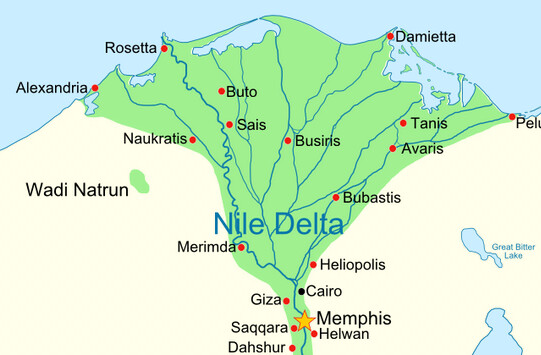I read this. It does not give the argument. Yet, there are two points to consider. One, there is a huge correspondence between the Egyptian, Sumeric and Indus signs. (see this https://drive.google.com/file/d/15eTQo2lZUQrpl4mwxPBe6DIkGMGfgkw9/view?usp=share_link). So whoch came first cannot be determined by study of language.
Two, the Egyptians and Sumerians themselves seem to say they came from Indus. So it would be difficult to sustain that Hebrew was the earliest. More if you can provide a paper giving the argument.
A story of the Sumerian Civilization records the birth of life in the country of Dilmun (Note 1). Dilmun have is located in the Indus Valley (Note 2). This means that the Sumerians believed the seat of creation was located in the Indus Valley.
The Egyptians say that they came from a land called “Punt” located across the Sea (Note 3).
Egyptologist Gerald Massey says that Egyptian legends give the name “anta” to the place of creation. This term also means “the land of dawn.” (Note 4). This indicates that the place of creation was located towards the dawn, or the east.
The Egyptian Papyrus of Ani mentions the central themes of creation in the following order:
The creation of humankind;
The sun rising;
The land of Manu;
Travel in a boat;
The land of Punt (Note 5).
Here, (1) “The creation of humankind” tells that these events took place at the time of creation. (2) “The sun rising” places these events in the east and matches with India. (3) “The land of Manu” is momentous. “Manu” was the name of Adam in the Hindu texts, as we have shown in the first section of this chapter. “The land of Manu” could, therefore, be located in the Indus Valley. (4) “Travel in a boat” matches with the Egyptians travelling in a boat to the Indus Valley.
The abovementioned literary evidences from Sumer and Egypt point to creation having taken place in India. We assume that people migrated from the Indus Valley to these places after the “creation.” They may have carried the narratives of creation from the Indus Valley to Sumer and Egypt. The Hebrews later brought the same narratives from the Indus Valley to Yisrael. The similarity between the Sumerian, Egyptian and Semitic narratives could arise from the common source of these narratives in the Indus Valley.
Note 1: Grimal, Pierre, Larousse World Mythology, 1969, Page 59.
Note 2: The phrase “where the morning sun rises confirms that Indus Valley lying to the east may be indicated; “I… came up with the tentative hypothesis that Dilmun, a land mentioned frequently in the Sumerian texts and glorified in Sumerian myth, may turn out to be the Indus land or at least some part of it” (Kramer, Samuel Noah, The Indus Civilization and Dilmun, the Sumerian Paradise Land, Expedition, Spring 1964, [www.penn.museum/documents/publications/…/6-3/The%20Indus.pdf]
Note 3: Ranganathan, Babu G, Indian Origin of Egyptian Civilization, April 3, 2010, [Babu G. Ranganathan's Articles on Religion and Science: Indian Origin of Egyptian Civilization].
Note 4: [Massey, Gerald, Ancient Egypt - The Light Of The World , Book 5, The Sign-Language Of Astronomical Mythology, Part 1, 1907, http://www.masseiana.org/aebk5.htm, Retrieved October 12, 2010.]
Note 5: “Hail… creator of mankind… The gods are glad [when] they see Ra in his rising… The… god… cometh unto the land of Manu… May I see Horus in charge of the rudder… may I grasp the bows of the seket boat…” The land of Punt is mentioned in one of the four alternative translations: “The land of Punt is established for the perfumes which thou smellest with thy nostrils” (Budge, E A Wallis, The Book of the Dead, The Papyrus of Ani, Book of Dead Plate 1, Retrieved September 14, 2015). Elsewhere, Budge translates this as “land of Manu (i.e., the land where the sun sets)” (Budge, E A Wallis, Egyptian Religion: Egyptian Ideas of the Future Life, Arkana, London, 1899 , Page 29-30). The phrase “the land where the sun sets,” is apparently added by Budge. This phrase does not make sense in view of the statement that Ra is seen in his rising which clearly points to sunrise and not sunset.
